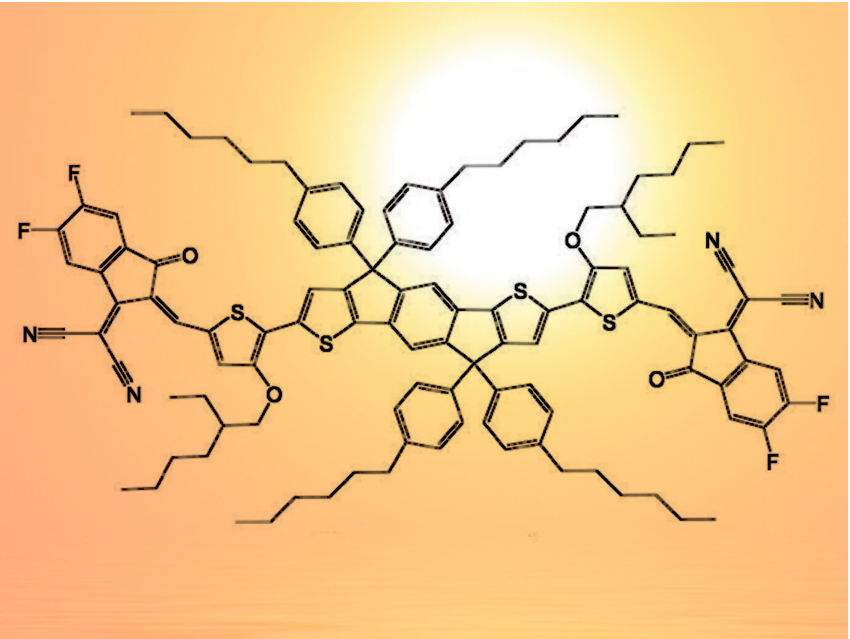Demand for energy from renewable sources, e.g., solar energy, is steadily growing due to climate change and other environmental and political issues associated with the use of fossil fuels. Lead-halide perovskites are suitable materials for use in solar cells. Their onset of light absorption typically lies around 800 nm, however. Thus, the near-infrared (NIR) part of the solar spectrum cannot be used for the generation of energy.
Yueh-Lin Loo, Princeton University, NJ, USA, and colleagues have extended the absorption spectrum of a lead-halide perovskite solar cell into the NIR region by adding the narrow-bandgap organic semiconductor IEICO-4F (pictured). This semiconductor is able to undergo efficient charge transfer with the perovskite and also serves as a Lewis base. Due to this Lewis basicity, IEICO-4F stabilizes the perovskite layers by passivating defects within the layers.
The researchers synthesized perovskite solar cells with IEICO-4F, without an additive, and with poly(methyl methacrylate) (PMMA) and compared their photocurrent generation. PMMA was used as a reference because it passivates the perovskite defects without broadening the absorption range. During synthesis, perovskite layers are treated with a solvent to control crystallization. IEICO-4F or PMMA was added to this solvent and, thus, deposited at the perovskite grain boundaries.
Incorporation of IEICO-4F led to 21.5 % efficiency for the modified perovskite cell compared to 20.0 % for the pristine cell. The modified cell also displayed improved stability. The efficiency of the PMMA-modified cell was lower at 20.4 %, which shows the effect of the additional absorption. These positive first results indicate that additives which simultaneously act as narrow-bandgap semiconductors with NIR absorbance and as Lewis bases are promising for improving the performance of perovskite solar cells.
- Extending the Photovoltaic Response of Perovskite Solar Cells into the Near‐Infrared with a Narrow‐Bandgap Organic Semiconductor,
Xiaoming Zhao, Chao Yao, Tianran Liu, J. Clay Hamill, Guy Olivier Ngongang Ndjawa, Guangming Cheng, Nan Yao, Hong Meng, Yueh‐Lin Loo,
Adv. Mater. 2019.
https://doi.org/10.1002/adma.201904494



